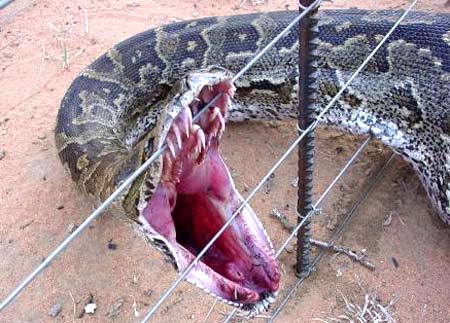USFWS Plan to Restrict Giant Invasive Snakes Seeks Public Comment
How is this effecting Florida’s feral cats population? – AmmoLand

Washington, DC –-(AmmoLand.com)- The U.S. Fish and Wildlife Service has published a proposed rule in the Federal Register to designate the Burmese python and eight other large constrictor snakes as “injurious wildlife” under the Lacey Act. If finalized, the designation will prohibit the importation and interstate transportation of these species.
In addition to the proposed rule, a draft economic analysis and environmental assessment are available for public review and comment for 60 days. These documents are available at: https://www.regulations.gov under Docket No. FWS-R9-FHC-2008-0015.
“We greatly value the public’s input and encourage engagement into this rulemaking process. The control of invasive species, including pythons and other large constrictor snakes, is a key step in our larger effort to restore the Everglades and protect other vulnerable areas of the country,” said Acting Service Director Rowan Gould.
On January 20, 2010, Secretary of the Interior Ken Salazar announced the Service would propose to designate these large constrictor snakes as injurious species. Salazar made the announcement at the Port of New York, which serves as the largest point of entry in the nation for imports of wildlife and wildlife products.
Under the Lacey Act, the Department of the Interior is authorized to regulate the importation and interstate transport of wildlife species determined to be injurious to humans, the interests of agriculture, horticulture or forestry, and the welfare and survival of wildlife resources of the United States.
The Burmese python (Indian python) is currently established across thousands of square miles in south Florida, and a population of boa constrictors is established south of Miami. In addition, evidence strongly suggests that a population of northern African pythons is reproducing on the western edges of Miami. The other species being considered in the proposed rule are the reticulated python, southern African python, yellow anaconda, DeSchauensee’s anaconda, green anaconda, and Beni anaconda. None of the nine species of snakes is native to the United States.
The U.S. Fish and Wildlife Service and National Park Service jointly funded a U.S. Geological Survey assessment, which highlighted the ecological risks associated with the establishment of the nine large constrictor species. All were shown to pose a high or medium risk to the health of ecosystems in the United States.
Burmese pythons and other large constrictor snakes are highly adaptable to new environments and prey on a wide variety and size of animals. Burmese pythons threaten many imperiled species and other wildlife. Two Burmese pythons were found near Crocodile Lake National Wildlife Refuge with the remains of three endangered Key Largo woodrats in their stomachs. As a result of these threats, more than 1,300 Burmese pythons have been removed from Everglades National Park and vicinity since 2000. Others have been removed from the Florida Keys, along Florida’s west coast and farther north along the Florida peninsula.
For Service information on injurious wildlife and how to send a comment, as well as links to partner agencies, visit: https://www.fws.gov
The mission of the U.S. Fish and Wildlife Service is working with others to conserve, protect and enhance fish, wildlife, plants and their habitats for the continuing benefit of the American people. We are both a leader and trusted partner in fish and wildlife conservation, known for our scientific excellence, stewardship of lands and natural resources, dedicated professionals and commitment to public service. For more information on our work and the people who make it happen, visit www.fws.gov.
